
Universe
Cosmos : another word for the universe
Cosmic: relating to the universe or cosmos.
Cosmic rays: highly energetic atomic nucleus or other particle travelling through space at speed approaching that of light. Direct exposure to cosmic rays can cause gene mutations resulting in cancer.
Cosmology: the scientific study of the large-scale properties of the universe as a whole ― NASA
Cosmological: relating to the origin and development of the universe.
Astronomy: the scientific study of celestial objects (stars, planets, comets, etc.) and phenomena that originate outside the Earth’s atmosphere (such as the solar wind, gravitational waves, etc.) ―
The Universe is all existing matter & space. It is incomprehensively large (beyond mental grasp).
- The Universe consists of both physical (subatomic particles like electrons, protons to galactic super-clusters) and non-physical (light, gravitation, space etc.) components.
- Most cosmologists believe that the universe was born about 13.8 billion years ago in an event called as Big Bang (a gigantic explosion that caused matter to expand in all directions to form galaxies, stars, etc.)
- The universe, at present, is said to possess about 100 billion galaxies, each comprising an average of 100 billion stars.
- In comparison, Milky Way Galaxy is believed to possess 100 billion to 400 billion stars.
1,000,000 = 1 Million = 10 Lakhs; 1,000,000,000 = 1 Billion = 100 Crores; 1000,000,000,000 = 1 Trillion
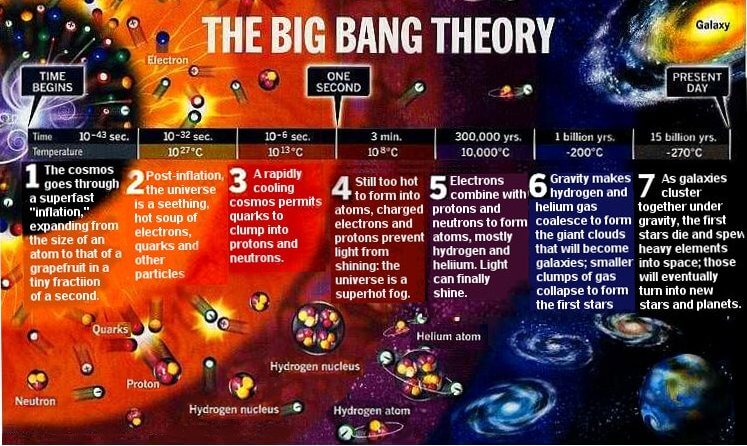
| Time | T in ◦c | Event |
| 10-43Sec | 1032 | The cosmos goes through a superfast “inflation,” expanding from the size of an atom to that of a grapefruit in a tiny fraction of a second. |
| 10-32Sec | 1027 | Post-inflation, the universe is a seething, hot soup of electrons, quarks and other particles. |
| 10-6 Sec | 1013 | A rapidly cooling cosmos permits quarks to clump into protons and neutrons. |
| 3 min | 108 | Still too hot to form into atoms, charged electrons and protons prevent light from shining: the universe is a superhot fog. |
| 3,00,000 years | 10,000 | Electrons combine with protons and neutrons to form atoms, mostly hydrogen and helium. Light can finally shine. |
| 1 billion years | -200 | Gravity makes hydrogen and helium gas coalesce to form the giant clouds that will become galaxies: smaller clumps of gas collapse to form the first stars. |
| 15 billion years | -270 | As galaxies cluster together under gravity, the first stars die and spew heavy elements into space: those will eventually turn into new stars and planets. |
- The Big Bang theory is the prevailing cosmological model for the birth of the universe.
- It states that at some moment all of space was contained in a single point of very high-density and high-temperature state from which the universe has been expanding in all directions ever since.
- Modern measurements place this moment at approximately 13.8 billion years ago.
- After the initial expansion (inflation), the universe cooled sufficiently to allow the formation of subatomic particles and later simple atoms.
- The majority of atoms produced by the Big Bang were hydrogen and helium along with trace amounts of lithium and beryllium.
- Giant clouds of these primordial elements (hydrogen and helium) later coalesced through gravity to form stars and galaxies.
- According to this theory, the universe, ever since its birth, is expanding in all directions.

- In 1964, the cosmic microwave background radiation was discovered, which was crucial evidence in favour of the Big Bang model.
- Other evidence such as cosmological redshift, gravitational waves, etc. have added weight to the big bang theory.
- At some point of times, the universe would reach a maximum size and then begin to collapse.
- It would become denser and hotter again, ending with a state similar to that in which it started — a Big Crunch, the death of the universe.
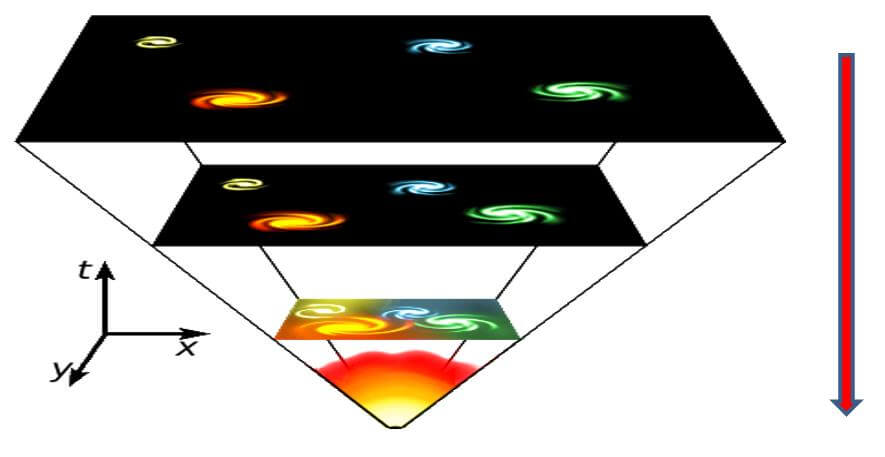
Doppler-shift or Redshift and Blueshift
- Redshift and Blueshift describe how light changes as objects in space (such as stars or galaxies) move closer or farther away from us. The concept is key to charting the universe’s expansion.
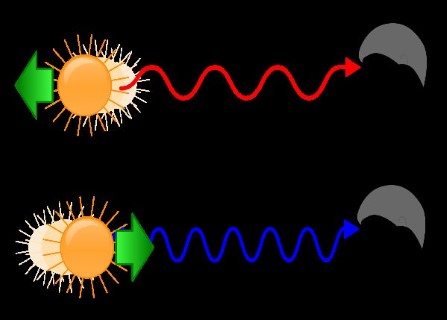
- Visible light is a spectrum of colours, which is clear to anyone who has looked at a rainbow.
- When an object moves away from us (Doppler-shifted to lower frequencies), the light is shifted to the red end of the spectrum, as its wavelengths get longer.
- If an object moves closer (Doppler-shifted to higher frequencies), the light moves to the blue end of the spectrum, as its wavelength gets shorter.
- American astronomer Edwin Hubble was the first to describe the redshift phenomenon (galactic redshift) and tie it to an expanding universe (galaxies are drifting apart).
- Hubble’s law: the farther away galaxies are, the faster they are moving away from Earth ― also known as accelerating the expansion of the universe.
Cosmic microwave background (CMD)
- With a traditional optical telescope, the space between stars and galaxies is completely dark.
- However, a sensitive radio telescope shows a faint background glow. This glow is strongest in the microwave region of the radio spectrum, and hence it is called a cosmic microwave background.
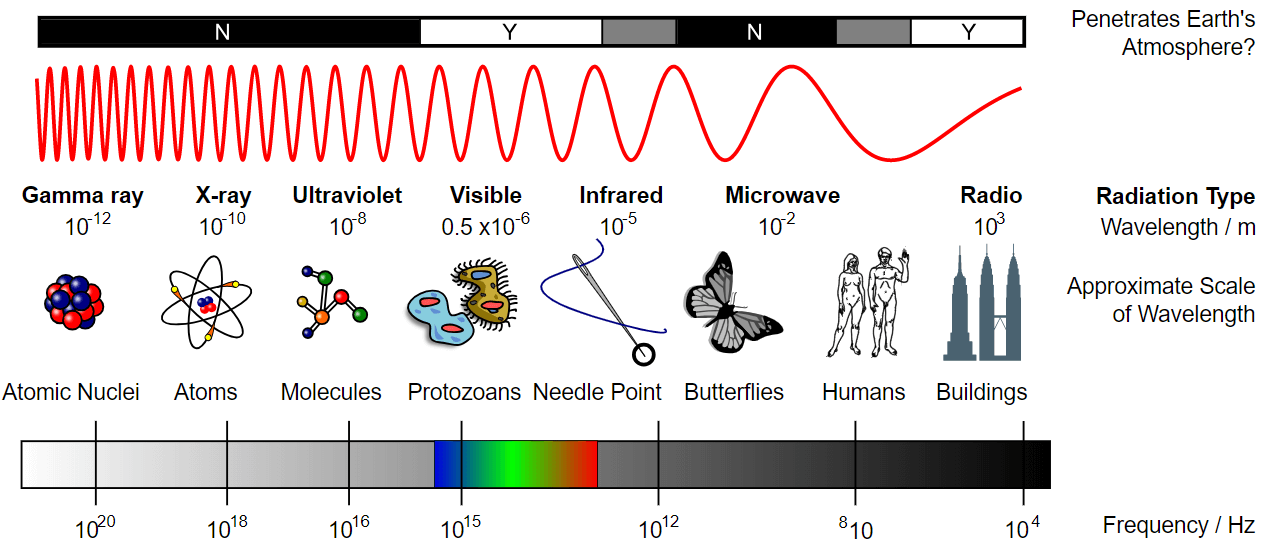
- CMB has gone from high energy photons (gamma photons or X-ray photons) to low microwave photons today due to the redshift from the expanding Universe.
- CMD, also known as relic radiation, is almost the same in all directions and it is not associated with any star, galaxy, or other objects. It is the thermal radiation left over from the “Big Bang”.
- The CMB is fundamental to observational cosmology because it is the oldest light in the Universe and can be found in all directions.
- As CMB is the radiation left over from an early stage in the development of the Universe, its discovery is considered a landmark test for the Big Bang model of the Universe.
Accelerating expansion of the universe
- It is the observation that the expansion of the universe is such that the velocity at which a galaxy is moving away from the observer is continuously increasing with time (Hubble’s law).
- It implies that the universe will get increasingly colder as matter spreads across in space.
- The accelerated expansion of the universe is thought to have begun since the universe entered its dark-energy-dominated era roughly 5 billion years ago.
- The accelerated expansion was discovered in 1998 using distant type Ia supernovae to measure the acceleration.
A type Ia supernova is a type of supernova that occurs in binary systems (two stars orbiting one another) in which one of the stars is a white dwarf. The other star can be anything from a giant star to an even smaller white dwarf.
- All Type Ia supernovae are thought to have nearly the same maximum brightness when they explode.
- Such consistency allows them to be used as beacons to measure the rate of expansion of the universe. The weaker the light, the farther away the star is (cosmological redshift).
- Dark energy is an unknown form of energy which is hypothesised to permeate (spread throughout) all of space, tending to accelerate the expansion of the universe.
Related or similar terminology
|
- Gravitational waves are ‘ripples’ in the fabric of space-time caused by some of the most violent and energetic processes in the Universe.
- These ripples travel at the speed of light through the Universe, carrying with them information about their origins.
- Albert Einstein predicted the existence of gravitational waves in 1916 in his general theory of relativity.
- He observed that massive accelerating objects (such as neutron stars or black holes orbiting each other) would disrupt space-time in such a way that ‘waves’ of distorted space would radiate from the source (like the movement of waves away from a stone thrown into a pond).
- In 2015, LIGO (The Laser Interferometer Gravitational-Wave Observatory, USA) physically sensed the distortions in spacetime caused by passing gravitational waves generated by two colliding black holes nearly 1.3 billion light-years away!
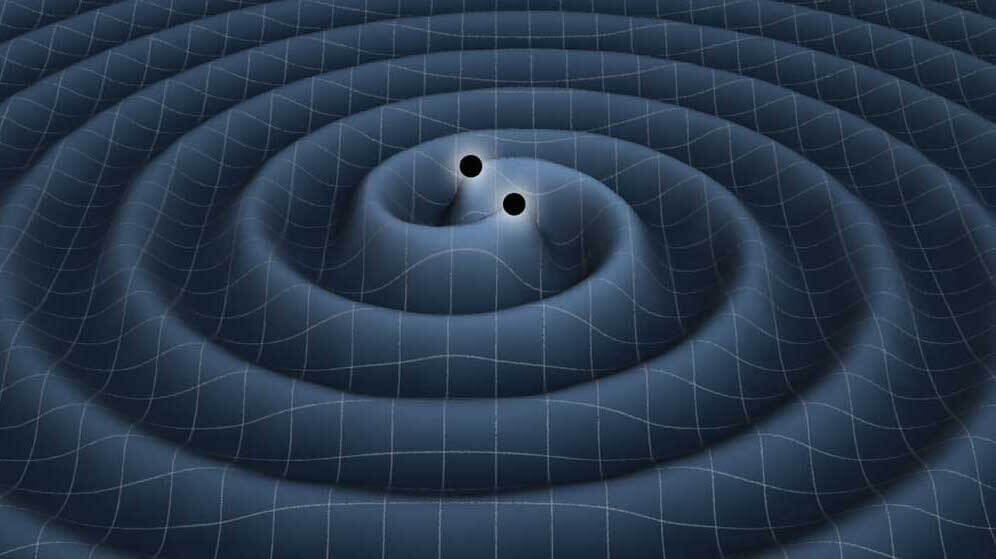
Gravitational waves (NASA)
- While the processes that generate gravitational waves can be extremely violent and destructive, by the time the waves reach Earth, they are billions of times smaller.
Importance of gravitational waves
- The gravitational waves can work as sirens to measure the expansion rate of the universe and to understand the origin and the future of the universe.
- Hubble’s Law: the farther away galaxies are, the faster they are moving away from Earth ― accelerating expansion of the universe).
- Hubble constant: a unit of measurement that describes the rate at which the universe is expanding.
- Two parameters that are essential to estimating the Hubble constant are the distance of the stars from Earth and how fast they are moving away from us (their velocity).
- But to date, the most precise efforts have landed on very different values of the Hubble constant.
- Scientists have proposed a more accurate and independent way to measure the Hubble constant, using gravitational waves.
- A flash of light would give an estimate of the system’s velocity (system: neutron stars or black holes orbiting each other), or how fast it is moving away from the Earth.
- The emitted gravitational waves, if detected on Earth, should provide a precise measurement of the system’s distance.
- By knowing the system’s velocity and distance, a precise calculation of Hubble constant is possible.




